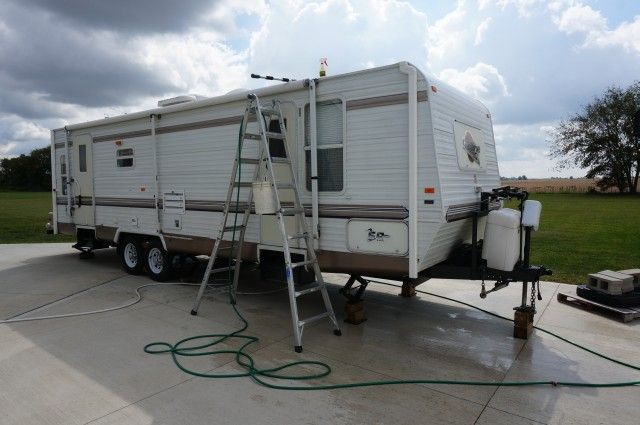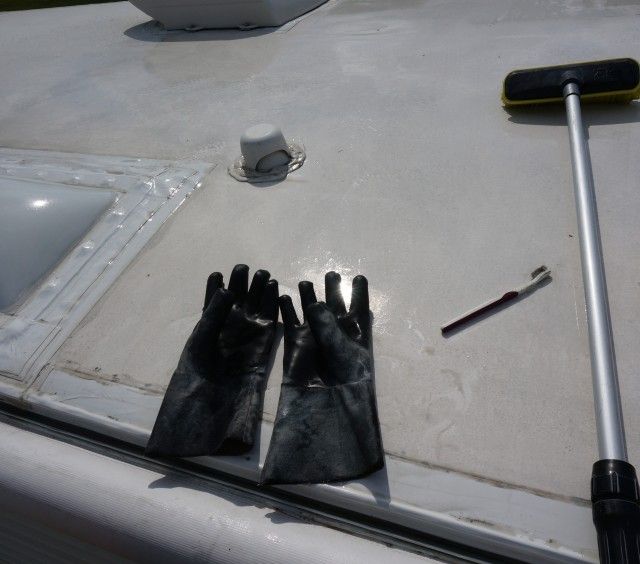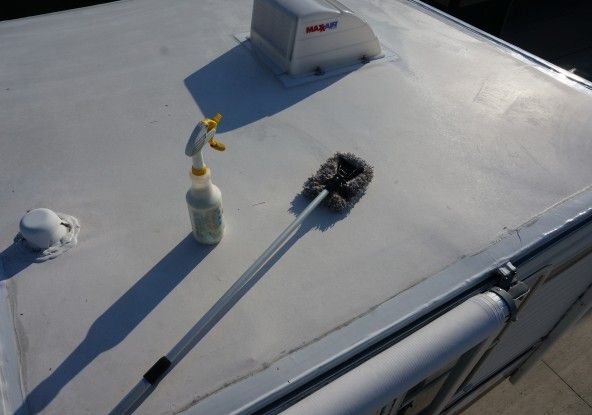Huntindog wrote:
John. as I stated from my post many many years ago, Dicors position on roof cleaning only changed after repeated customer requests on how to do this... Probably because of the harmless black streaks that some get. ( Here in AZ, it doesn't seem to be an issue).
Dicor obviously saw a business opportunity, and created a line of roof cleaning products. Which they now naturally strongly recommend.
As for different thicknesses. That may now be the case. But it doesn't change much.
Likely the RV manufacturers asked for lighter material so they could reduce the weight of their units.
Carlise says that the white material CAN be washed. Only to retain the reflectitiy of the material. But there is NO warranty requirement for it. AND the black material has NO washing recommendations.
For those that want to wash your roof.. My recommendation stays the same. If it makes you feel good, do it. So long as it is done right,
it won't hurt a thing....
But since I became the Safety Coordinator at my job about 5 years ago.... I must caution people on the dangers of doing so. A wet roof can be VERY slippery! The only safe way to do it would be with a catwalk scaffold system. Some dealers may have such a system. I know the manufacturer does, as I have seen it.
A fall to the ground can SERIOUSLY cripple or kill.
Be careful up there.
Hi Huntingdog,
Your note just triggered a few thoughts.
The weather conditions in AZ are very different then back east. My observations on dirt and molded roofs are coming from OH,
PA, NY, MI, NJ, NH, MD, IN for the most part on roofs that I myself have seen or worked on. I have worked out of our Casa Grande AZ (outside Phoenix) for many years. The joke is for us back east, "its a dry heat"... They dry season is long and dry. The wet season is shorter. Back east, mold grows all over. The side of houses, asphalt roofs etc. That slime holds dirt and makes it really stick on a camper roof. I do not recall much mold in my time in AZ the conditions do not support it as much as back east. The wind for sure blows in AZ... and dust is everywhere when it happens. But if there is noting to make it stick, then the buildup on a RV roof may be considerable less. The mold/dirt mixture holds moisture and really raises havoc on the screws in the gutter rails behind the vinyl strip. Screw rot is common here.
I really do not know how dirty and bonded on dirt is on campers in high heat states. They for sure have the heavy UV problems, most likely worse then back east, but a dirty roof from the east may be worse then a dusty roof from AZ. Many of us are reporting on what we see where we live. The 2 may be different levels of severity.
The newer line of Dicor products for roof maintenance. Yes, I agree they now offer all of them where back in the 2003/2004 time frame they did not. They just said use laundry detergent, I picked Tide. But they still said wash the roof 4 times a year. That is not that new. I do not know what it was a lot prior to 2003.
Safety on the roof, I 1,000% agree with you. You really do not want to be on a wet camper roof period. Use a solid 300# OSHA rated ladder tall enough on solid surface and clean from the side with a pole brush. Here is my setup to help the cause.
The ladder setup

The washing brush setup. The toothbrush is for cleaning the crud out of the gutter.

The 303 applicator. A car wax mop on a pole and 303 in a squirt bottle.

We really should not be comparing commercial rubber roofing to an RV roof. The actual water barrier on the Dicor rubber roof of 2003 and 2017 is 0.016". That is not much. It is slightly more then 2 and 1/2 sheets of some printer paper. The largest part of the layer makeup is the white layer. And the makeup of the white layer on an RV roof may be very different then a commercial roof.
Remember the RV industry is after something that just works, is ultra low cost and will just get past the warranty period. The entire camper is only designed to last so long. Dicor filled the need the RV industry was asking for. You do not really seeing Dicor Brite Ply EPDM being put on houses or buildings are you? (at least by mfg recommendation...) The first thing the lady at Dicor said to me, Oh the commercial roofing materiel is very different, it is much thicker. It's different. The entire white layer of and RV roof may be made from very different material then the commercial roof the black layer too. Do you think the RV roof is made the exact same way as the commercial roof? If so how did you come to this conclusion?
Thanks
John


